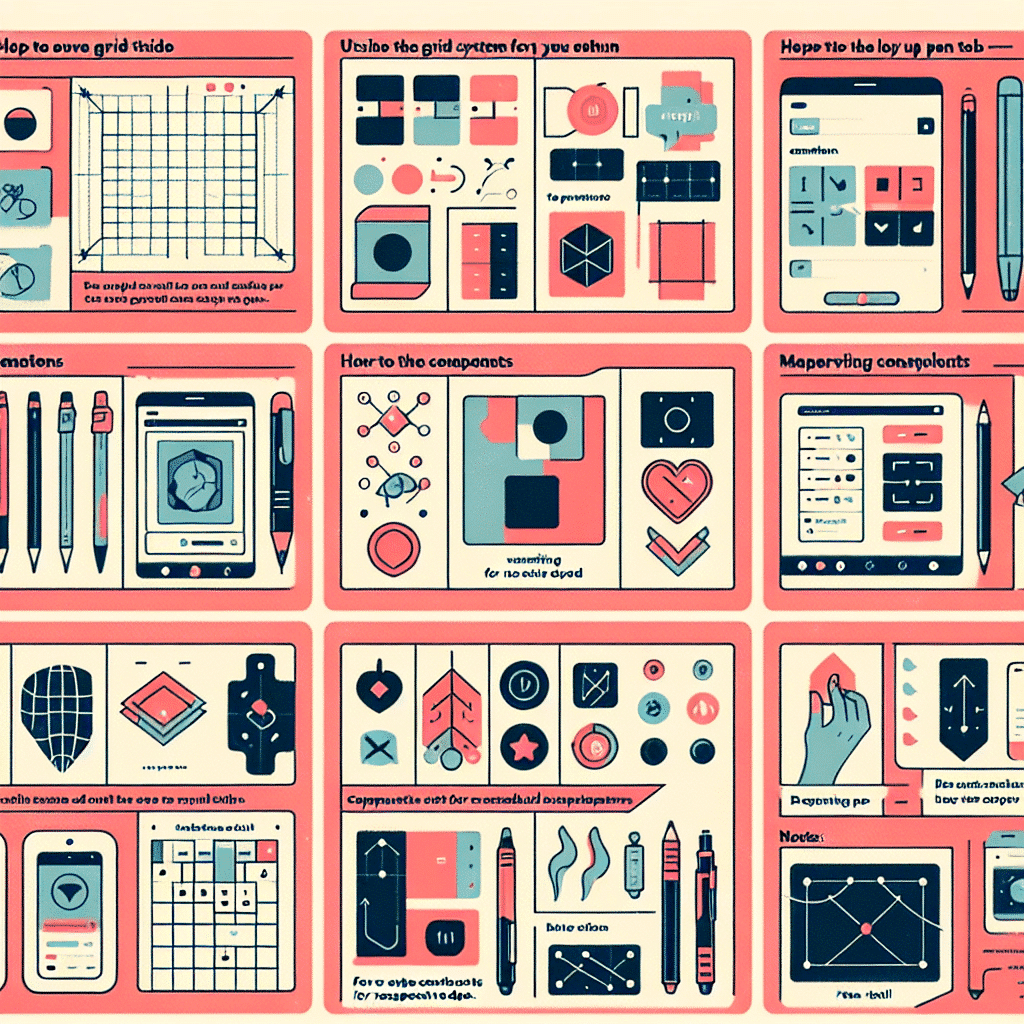Mastering Figma: Essential Tips for Designers and Web Developers
Hey there! Ready to level up your Figma game? I’ve got some killer tips that’ll make you a Figma pro in no time.
Figma’s been a game-changer for me and my team. It’s not just another design tool – it’s a powerhouse that’s revolutionized how we work.
Let’s dive into some Figma pro tips that’ll supercharge your workflow:
1. Get the basics down pat
Before you jump into the fancy stuff, nail the fundamentals.
- Learn to navigate like a pro.
- Master frames, layers, and shapes.
- Practice by mocking up a simple website or app.
Trust me, this foundation will pay off big time later.
2. Mobile-first is the way to go
- Start with mobile layouts – it’s a game-changer.
- Forces you to focus on what really matters.
- Makes expanding to larger screens a breeze.
You’ll thank me later when your designs look slick on any device.
3. Make friends with the color wheel
- Colors can make or break your design.
- Use the color wheel to find killer color combos fast.
- No more hours wasted on picking the perfect palette.
Your designs will pop, and clients will love it.
4. Plugins are your secret weapon
- Automate the boring stuff with plugins.
- Content Reel for placeholder text? Game-changer.
- Unsplash for high-quality images? Yes, please.
- Image Tracer for vectorizing bitmaps? Lifesaver.
5. Auto Layout is your new best friend
- Creates responsive designs in a snap.
- Keeps spacing and alignment consistent across screens.
- Saves you tons of time and headaches.
Once you master this, you’ll wonder how you lived without it.
6. Math in Figma? Trust me, it’s cool
- Perform calculations right in Figma.
- Achieve pixel-perfect designs effortlessly.
- Great for responsive and adaptive layouts.
Don’t fear the numbers – embrace them!
7. Keep it organized, folks
- Clean workspace = happy designer.
- Use layers like a pro.
- Group related elements.
Your future self (and your team) will thank you.
8. Collaboration is key
- Real-time collaboration is Figma’s superpower.
- Use FigJam for brainstorming sessions.
- Comments keep everyone on the same page.
- Branching lets you experiment without fear.
9. Constraints are your friend
- Maintain consistent layouts across screens.
- Set ’em up right, and your designs will behave.
- Essential for responsive design.
Once you get it, you’ll wonder how you lived without it.
10. Level up your prototyping game
- Create smooth, interactive prototypes.
- Master transitions for that extra wow factor.
- Test your designs like a pro.
Clients love seeing their ideas come to life.
11. Make developers love you
- Smooth handoff = happy developers.
- Use design systems like a boss.
- Provide clear documentation.
Your dev team will sing your praises.
12. Design systems for the win
- Keep everything consistent.
- Create and organize variants like a pro.
- Use design system analytics to stay on top of things.
Your whole team will thank you.
Conclusion:
Mastering Figma is a journey, but it’s so worth it. These tips have transformed my workflow, and I know they’ll do the same for you.
Want to take your Figma skills to the next level? Check out my Figma Pro resources at https://shop.bytevault.co.in/product/figma-pro-on-your-email/. It’s packed with advanced tips and tools that’ll make you a Figma wizard.
FAQs:
Q: How long does it take to become proficient in Figma?
A: It depends on your dedication, but with consistent practice, you can become proficient in a few weeks to a couple of months.
Q: Is Figma better than other design tools?
A: Figma has some unique advantages, especially in collaboration and web-based workflow. But the best tool depends on your specific needs.
Q: Can I use Figma for free?
A: Yes, Figma offers a free plan with limited features. It’s great for beginners or small projects.
Q: How often should I update my Figma skills?
A: Figma frequently updates its features. I recommend staying on top of new updates and practicing regularly to keep your skills sharp.
Remember, becoming a Figma pro isn’t just about knowing the tools – it’s about using them creatively to solve design challenges. Keep practicing, stay curious, and don’t be afraid to experiment. You’ve got this!




